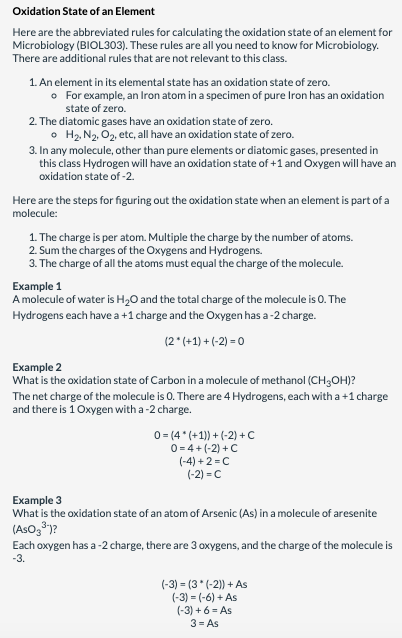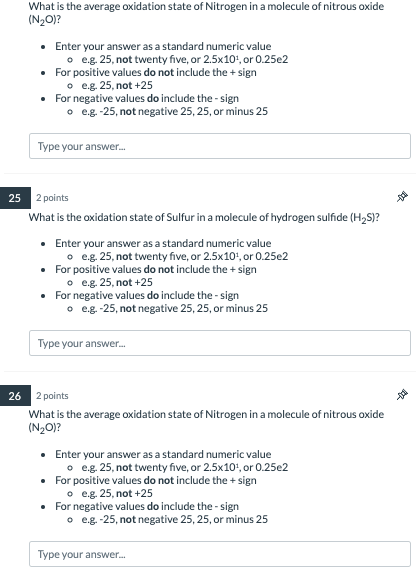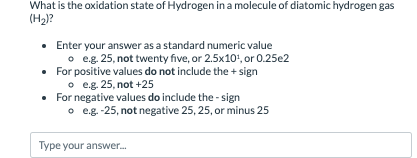Answered step by step
Verified Expert Solution
Question
1 Approved Answer
Will rate! Oxidation State of an Element Here are the abbreviated rules for calculating the oxidation state of an element for Microbiology (BIOL303). These rules




Will rate!
Oxidation State of an Element Here are the abbreviated rules for calculating the oxidation state of an element for Microbiology (BIOL303). These rules are all you need to know for Microbiology. There are additional rules that are not relevant to this class. 1. An element in its elemental state has an oxidation state of zero. - For example, an Iron atom in a specimen of pure Iron has an oxidation state of zero. 2. The diatomic gases have an oxidation state of zero. - H2,N2,O2, etc, all have an oxidation state of zero. 3. In any molecule, other than pure elements or diatomic gases, presented in this class Hydrogen will have an oxidation state of +1 and Oxygen will have an oxidation state of 2. Here are the steps for figuring out the oxidation state when an element is part of a molecule: 1. The charge is per atom. Multiple the charge by the number of atoms. 2. Sum the charges of the Oxygens and Hydrogens. 3. The charge of all the atoms must equal the charge of the molecule. Example 1 A molecule of water is H2O and the total charge of the molecule is 0 . The Hydrogens each have a +1 charge and the Oxygen has a 2 charge. (2(+1)+(2)=0 Example 2 What is the oxidation state of Carbon in a molecule of methanol (CH3OH) ? The net charge of the molecule is 0 . There are 4 Hydrogens, each with a +1 charge and there is 1 Oxygen with a 2 charge. 0=(4(+1))+(2)+C0=4+(2)+C(4)+2=C(2)=C Example 3 What is the oxidation state of an atom of Arsenic (As) in a molecule of aresenite (AsO33) ? Each oxygen has a 2 charge, there are 3 oxygens, and the charge of the molecule is 3. (3)=(3(2))+As(3)=(6)+As(3)+6=As3=As IMPORTANT NOTE FOR ANSWER FORMATING 1. Enter your answer as a standard numeric value - e.g. 25, not twenty five, or 2.5101, or 0.25e2 2. For positive values do not include the + sign o e.g. 25 , not +25 3. For negative values do include the - sign - e.g. 25, not negative 25,25 , or minus 25 What is the average oxidation state of Nitrogen in a molecule of nitrous oxide (N2O) ? - Enter your answer as a standard numeric value o e.g. 25 , not twenty five, or 2.5101, or 0.25e2 - For positive values do not include the + sign o e.g. 25 , not +25 - For negative values do include the-sign o e.g. 25, not negative 25,25 , or minus 25 52 points What is the oxidation state of Sulfur in a molecule of hydrogen sulfide (H2S) ? - Enter your answer as a standard numeric value - e.g. 25 , not twenty five, or 2.5101, or 0.25e2 - For positive values do not include the + sign o e.g. 25 , not +25 - For negative values do include the-sign o e.g. 25, not negative 25,25 , or minus 25 2 points What is the average oxidation state of Nitrogen in a molecule of nitrous oxide (N2O) ? - Enter your answer as a standard numeric value o e.g. 25 , not twenty five, or 2.5101, or 0.25e2 - For positive values do not include the + sign o e.g. 25 , not +25 - For negative values do include the - sign o e.g. 25, not negative 25,25 , or minus 25 What is the oxidation state of Hydrogen in a molecule of diatomic hydrogen gas (H2) ? - Enter your answer as a standard numeric value - e.g. 25 , not twenty five, or 2.5101, or 0.25e2 - For positive values do not include the + sign - e.g. 25 , not +25 - For negative values do include the - sign - e.g. 25, not negative 25,25 , or minus 25Step by Step Solution
There are 3 Steps involved in it
Step: 1

Get Instant Access to Expert-Tailored Solutions
See step-by-step solutions with expert insights and AI powered tools for academic success
Step: 2

Step: 3

Ace Your Homework with AI
Get the answers you need in no time with our AI-driven, step-by-step assistance
Get Started


